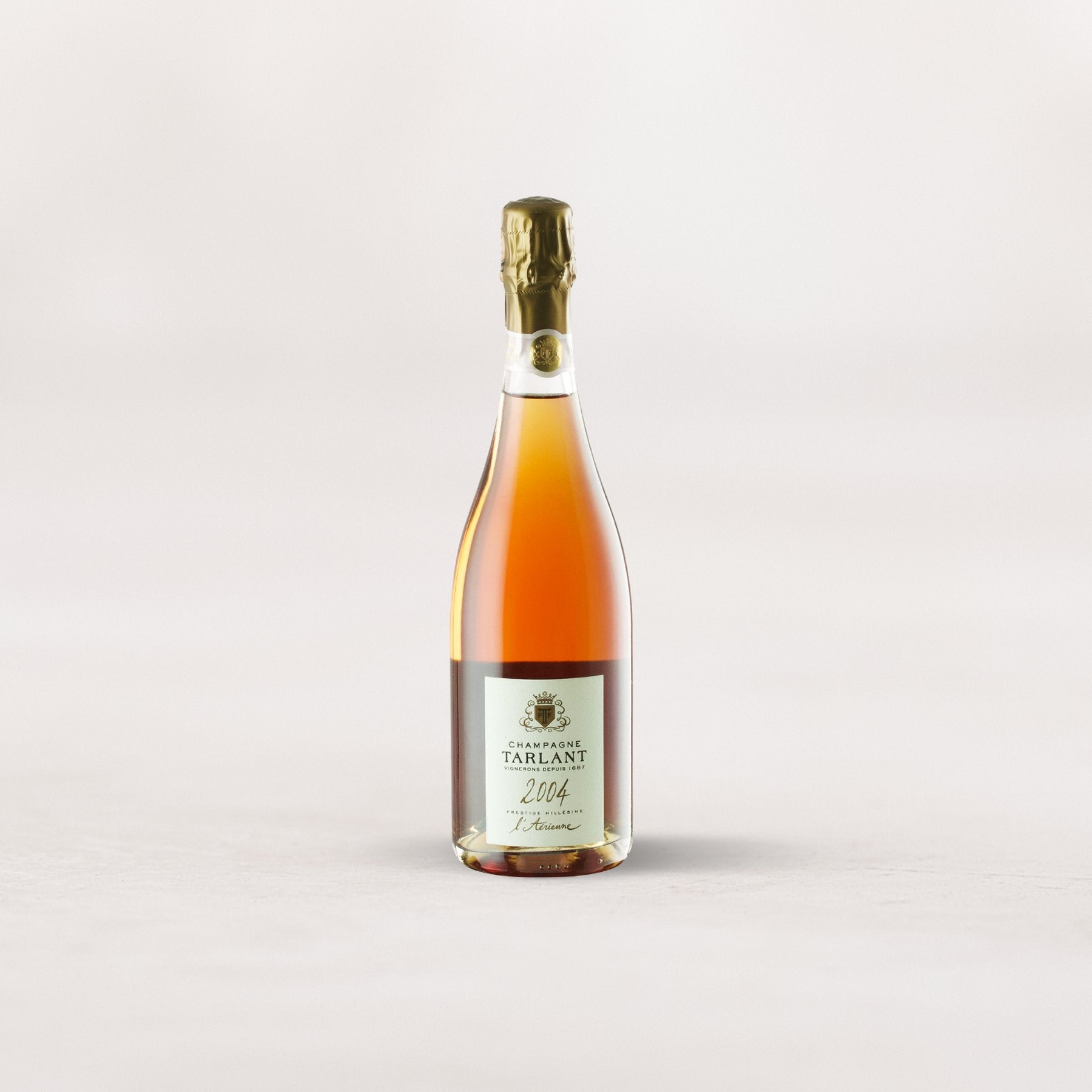Confession: Tonight’s offer may be accompanied by some nostalgia and bias. Because, back when I worked the floor as a sommelier and pooled monies with coworkers to splurge on a wine, it was an old bottle of Tarlant “Cuvée Louis” that became my first “epiphany” champagne. I’ve held Tarlant in the highest regard ever since, all while having the great fortune of exploring the majority of their endlessly complex, long-aged range. That said, tonight’s 2004 prestige rosé was a first for me, and likely my last, given its grievously limited and highly allocated production.
Clocking in at a mere 250 cases, this Certified Organic, barrel-vinified stunner saw over 15 years of maturation before disgorgement without the adornment of sugar. For the uninitiated, Tarlant is among Champagne’s most historical, significant, and pioneering surnames, and I always feel their top prestige cuvées communicate more “data” than others. Put another way, you can and should explore this 2004 “L’Aérienne” Rosé over several days, slowly unraveling and deciphering all that it has to say. It is profoundly deep, vinous, mineral-guided Champagne that is naturally engineered for the most daring and experienced connoisseur. No more than four bottles per person. Two earns you free shipping.
Tarlant is one of the most time-honored and respected surnames in all of Champagne. This family, currently overseen by 12th-generation mastermind Benoît Tarlant, has been farming grape vines since the 1680s, and they’ve called the Vallée de la Marne village of Oeuilly home for the last quarter-millennium. Not only were they among the first 10 grower-producer estates, but they also (1) played a powerful role in organizing/enforcing the Champagne AOC and (2) introduced one of the very first single-vineyard bottlings. They are pioneers of their craft who continue to grace and propel the uppermost tier of Champagne. Simply speaking, the Tarlants are living legends.
The 2004 rosé edition of “L’Aérienne” hails from four organically farmed, chalky limestone parcels along the Marne River. Tarlant’s fully ripened grapes were hand harvested in the last week of September and into the early days of October. In the cellar, whole clusters were gently pressed into Burgundian barrels where a spontaneous fermentation, sans malo, commenced. After six months in oak, the parcel-specific wines were blended together with a small percentage of still red wine (for color and additional texture) and transferred into bottle without fining or filtration. From here, the wine quietly evolved for over 15 years—188 months, specifically—before disgorgement on February 1, 2021. A cork was applied without dosage.
As much as I enjoyed this vinous beauty, I also know that it’s not a crowd-pleasing, no-thought-required champagne. That’s always the case for Tarlant’s long-aged prestige cuvées. If this is your first experience with one, perhaps stick to 1-2 bottles. If you’re a Tarlant veteran, purchase the maximum amount without a second thought.
I poured this 2004 “L’Aérienne” Rosé into Burgundy stems and allowed it 2-3 minutes to open up in the glass before dipping in my nose and discovering deep, enveloping aromas of bruised strawberry, white cherry, redcurrant, licorice, wild herbs, damp wood, crushed chalk, wet clay, old penny, cardamom, caramel, and marzipan. The palate is loaded with dense, broad, extremely vinous textures that slowly move into a mature, lightly oxidative, mineral finish. I eagerly tracked my bottle over two evenings, without a stopper, and it didn’t once falter which leads me to believe a long life lies ahead!











